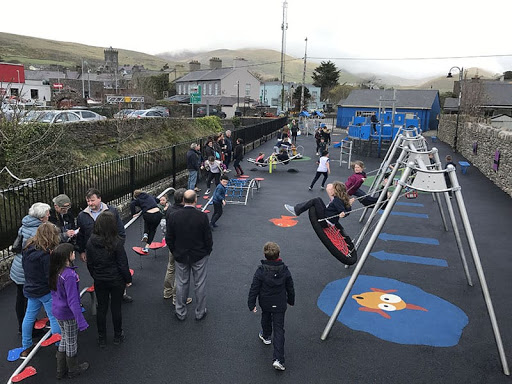

It was largely through Flower's writings that the academic world was alerted to Sayers' storytelling gifts.īut life on Great Blasket was becoming more difficult. He became a fluent Irish speaker and was keenly appreciative of Peig Sayers' stories and tales. Flower fell in love with them and their people and visited almost every year for the rest of his life. Shortly afterwards, Marstrander met the young English scholar, Robin Flower, who was working on Irish manuscripts at the British Museum, and urged him to visit the Blaskets. The Norwegian scholar Carl Marstrander visited the island in 1907 and was deeply impressed with Sayers. In summer, the unspoiled, almost archaic way of life of the islands attracted many visitors, including students of the Irish language from Britain and Europe. She and Pádraig had eleven children, of whom six survived. Though arranged, the marriage was happy, and Peig soon made close friends on Great Blasket. The Blaskets, a group of islands some miles off the Dingle Peninsula, were places of great beauty in summer, but in winter they were bleak, desolate, exposed to the Atlantic winds, and often cut off for weeks at a time by the dangerous winter tides. Sayers returned to Vicarstown where her brother arranged a marriage for her with Pádraig Ó Guithín, from Great Blasket Island. Four years later, Boland wrote Sayers telling her that she had had an accident and would not be able to send the money. In the meantime, Peig, expecting the fare within a year, took a job as a farm servant, a notoriously hard form of work. Then Boland went, promising to send back fare money to Sayers as soon as possible. She and her best friend, Cáit Boland, talked often of emigration, as most of their contemporaries had by now left for America.

In her autobiography, she writes that after two years with the Currans she became ill and returned to Vicarstown, though she does not describe the illness. Sayers was lucky in that she was treated well by her employers. At age 12, Peig was taken out of school and went to work as a servant for the Curran family who were merchants in the nearby town of Dingle. Her sister-in-law was bad-tempered and took out her anger on Peig and her father. When she was seven, the family peace was disturbed by her brother Sean's new wife who came to live with them. As the youngest child, Peig was cherished by her parents she was particularly close to her father whom she described as a quiet, sensible man. America was a magnet for its young people, and there was a long-established process of chain migration whereby emigrant relatives and friends would send the passage money back to other relatives and friends in Ireland. (These Irish-speaking areas, called the Gaeltacht, were gradually being eroded by the spread of English.) The region was also being eroded by emigration for it was one of the poorest in Ireland and still very much dependent on potatoes as a staple food.

The Dingle Peninsula was an area of outstanding scenic beauty and, by the time of Peig's birth, one of the last bastions of the native Irish language. She was always known as Peig, after her mother. Six months later in March 1873 their last child was born. The Sayerses then moved to the town-land of Vicarstown, near the village of Dunquin at the westernmost tip of the Dingle Peninsula in County Kerry, in late 1872. He had lived through the Great Famine of the 1840s but after his marriage to Peig Brosnan of Castleisland their first nine children had died in infancy. Her father Tomás Sayers was a renowned storyteller who passed on many of his tales to his youngest child Peig. According to family tradition, the Sayers family was originally of English origin but by the mid-19th century had become completely gaelicised, dispossessed and poor, ekeing out a living in the remote southwest of Ireland. Swedish folklore scholar Bo Almqvist maintains that it would be hard to find Peig Sayers' match as a storyteller anywhere in the world. Born Máiréad (Margaret) Sayers in Vicarstown, Dunquin, County Kerry, Ireland in March 1873 (exact date unknown but christened on March 29) died in Dingle, County Kerry, on Decemyoungest child of Tomás Sayers and Máiréad Ní Bhrosnacháin (Margaret "Peig" Brosnan) Sayers educated at Dunquin National School married Pádraig Ó Guithín (Patrick Flint), in February 1892 children: two daughters, four sons.


 0 kommentar(er)
0 kommentar(er)
